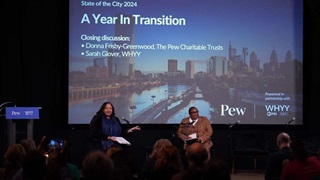Chile Celebrates Inaugural National Protected Areas Day
November holiday highlights the importance of conserving natural spaces to protect ecosystems and improve people’s well-being

At the third Latin American and Caribbean Congress on Protected Areas in Lima, Peru, in 2019, countries were urged to designate a day to raise awareness about protected areas’ importance—to wildlife, ecosystems, and people—and to help communities forge meaningful connections with these natural spaces.
Lawmakers of various political stripes answered that call in Chile, and with backing from the Environment Ministry, the National Forest Service and Protected Areas Agency (CONAF), and civic organizations, Chilean officials declared the second Saturday of every November as National Protected Areas Day.
So, on Nov. 11, Chile’s 107 protected areas—along with all Indigenous and marine areas, and even some private protected areas—were formally celebrated nationwide for the first time. The mix of Chilean government ministries and nongovernmental advocacy groups that organized the event encouraged all citizens to visit marine and coastal protected areas, wetlands, national parks, reserves, and sanctuaries to enjoy and become better acquainted with these natural spaces.
Studies show that effective protection of healthy natural land and waters conveys a wide range of benefits, such as providing places for wildlife to feed and breed, supplying carbon sinks to help counter climate change, and bringing jobs and revenue to local communities through recreation and ecotourism.
Throughout the country, government agencies and organizations hosted walks, treks, educational talks and activities, and other events highlighting Chile’s richly diverse natural heritage.
One of the key events took place in the Metropolitan Region’s Río Clarillo National Park, where a group gathered to experience the park’s forested hills and clear streams from an accessible trail with volunteers and clients of the ERES Foundation, a Chilean nongovernmental organization that works to help make public spaces more inclusive. Other highlights included visits to Laguna San Rafael National Park, Laguna Parrillar National Reserve, and the Laguna Caiquenes Protected National Asset.
ERES President Glenda Durán said celebrating National Protected Areas Day “is crucial for the entire country, because it helps guarantee that all people can equally enjoy natural spaces for generations to come.”
National Protected Areas Day also aligns with Chile’s commitment—made at the 15th Conference of the Parties to the Convention on Biological Diversity—to protect at least 30% of the world’s ocean, land, and freshwater by 2030, a goal commonly referred to as “30 by 30.” The designation resulted from a cross-cutting parliamentary initiative with support from the Protected Areas Foundation and The Pew Charitable Trusts.
Renzo Galgani, manager of protected wild areas for CONAF, urged people to “help this holiday really take off so that—much like Heritage Day—it becomes something Chileans genuinely look forward to celebrating each year.”
Carolina Jarpa works on The Pew Charitable Trusts’ Chilean Patagonia project.
Spotlight on Mental Health
MORE FROM PEW
Explore Pew’s new and improved
Fiscal 50 interactive
Your state's stats are more accessible than ever with our new and improved Fiscal 50 interactive:
- Maps, trends, and customizable charts
- 50-state rankings
- Analysis of what it all means
- Shareable graphics and downloadable data
- Proven fiscal policy strategies
Welcome to the new Fiscal 50
Key changes include:
- State pages that help you keep track of trends in your home state and provide national and regional context.
- Interactive indicator pages with highly customizable and shareable data visualizations.
- A Budget Threads feature that offers Pew’s read on the latest state fiscal news.












